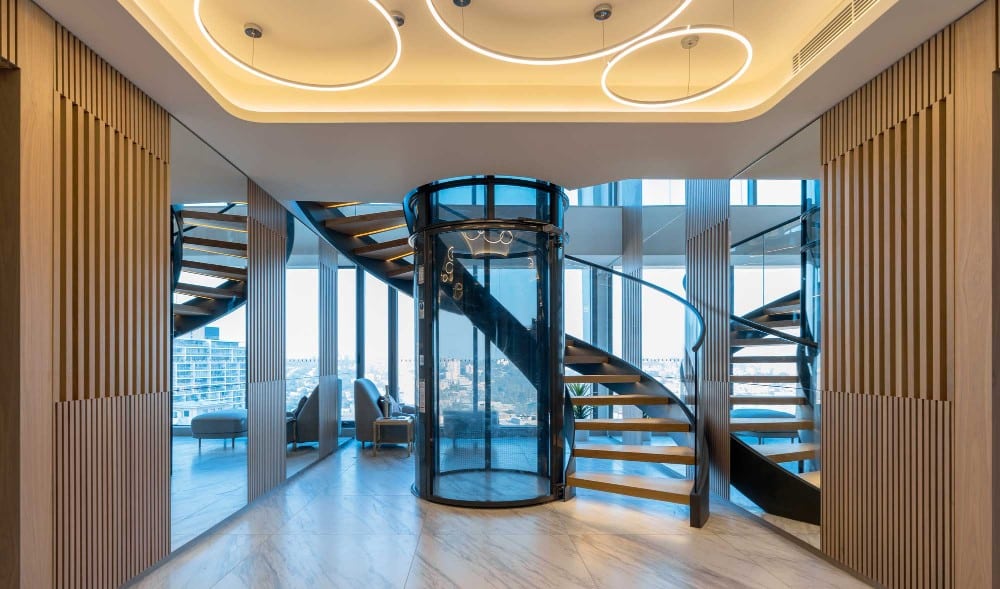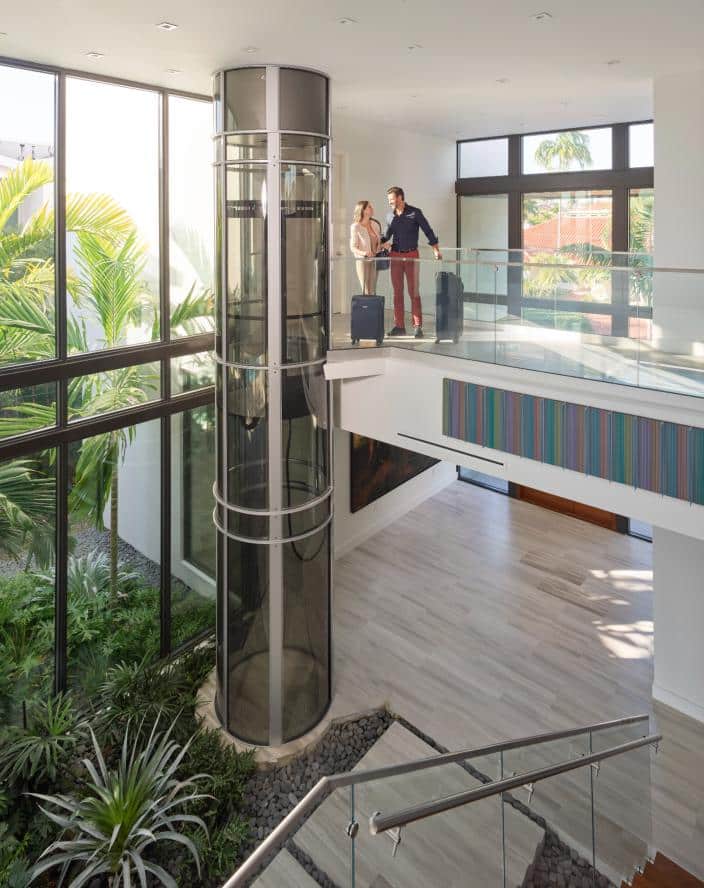Have you ever wondered what makes a home elevator glide effortlessly between floors?
Understanding the key home elevator components that make it up can be a game-changer when considering the installation of a home lift.
Each component plays a crucial role, from the drive system that powers the lift to the cabin that provides comfort and style. These components are integral to the overall lifting system, ensuring a smooth, reliable, and safe ride.
Exploring how these parts fit into the broader residential elevator lifting systems can give you a clearer picture of their importance.
Knowing the details behind these components not only empowers you to make a smart, informed decision but also helps you feel confident that your investment will meet all your needs.
Whether you’re focused on enhancing accessibility, adding a modern touch to your home, or looking for energy-efficient options, understanding how each component works makes it easier to choose the perfect fit.
At PVE, we take pride in our innovative design and eco-friendly technology, ensuring every component is built for top performance and style.
By familiarizing yourself with these details, you’ll find the right elevator that not only improves your home but also elevates your everyday living experience.
What are the components of a Home Elevator?
Cabin/Car
The cabin, or car, is where passengers ride during their journey between floors. This space is designed to offer both comfort and style, ensuring a pleasant experience.
These cabins are often customizable, allowing you to choose materials and finishes that match your home’s decor.
Features like lighting and ventilation can further enhance the experience, creating a well-lit, comfortable space that’s enjoyable to use.
Shaft/Hoistway
The shaft, also called the hoistway, is the vertical passage through which the elevator moves.
In some lifts, the shaft must be built into the home before installation, but others offer self-supporting designs that don’t require pre-construction work.
This flexibility can be beneficial if you install it in an existing home with limited space.
Drive System
The drive system powers the elevator and controls how it moves between floors. Different types use different systems, such as hydraulic, cable-driven, or pneumatic (air-powered).
Pneumatic drive systems are particularly known for their smooth operation and energy efficiency, making them an eco-friendly choice that also requires minimal maintenance.
4 Models To Choose From
Are you looking for an in-home elevator? Simply pick your favorite below to learn more.
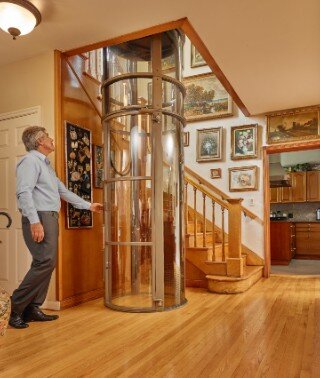
PVE30 - Home Elevator
Single Passenger Residential Elevator
Space-Saving Solution
Exterior Diameter
30 Inches
(750 millimeters)
Maximum Weight
350 Pounds
Rated: 1 Person
Per Use
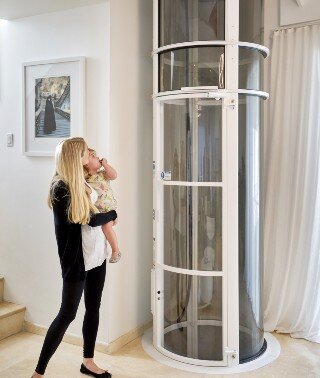
PVE37 - Home Elevator
Two Passenger Residential Elevator
Flexible & Dynamic Lift
Exterior Diameter
37 Inches
(933 millimeters)
Maximum Weight
450 Pounds
Rated: 2 People
Per Use
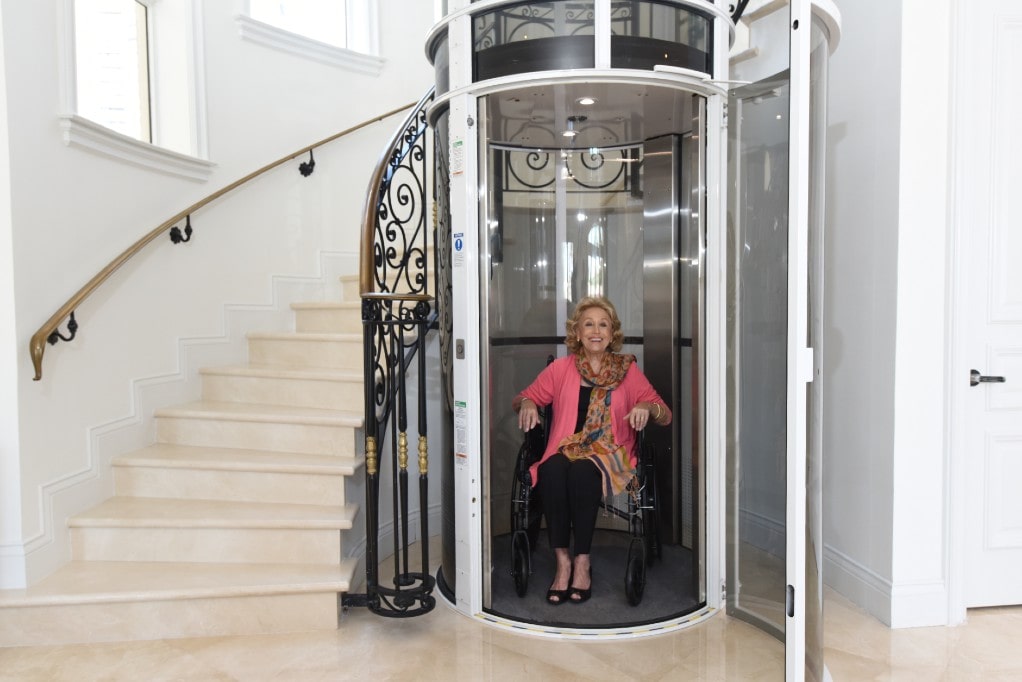
PVE52 - Home Elevator
Three Passenger Residential Elevator
Wheelchair Accessible Lift
Exterior Diameter
52 - 11/16 Inches
(1,316 millimeters)
Maximum Weight
525 Pounds
Rated: 3 People
Per Use
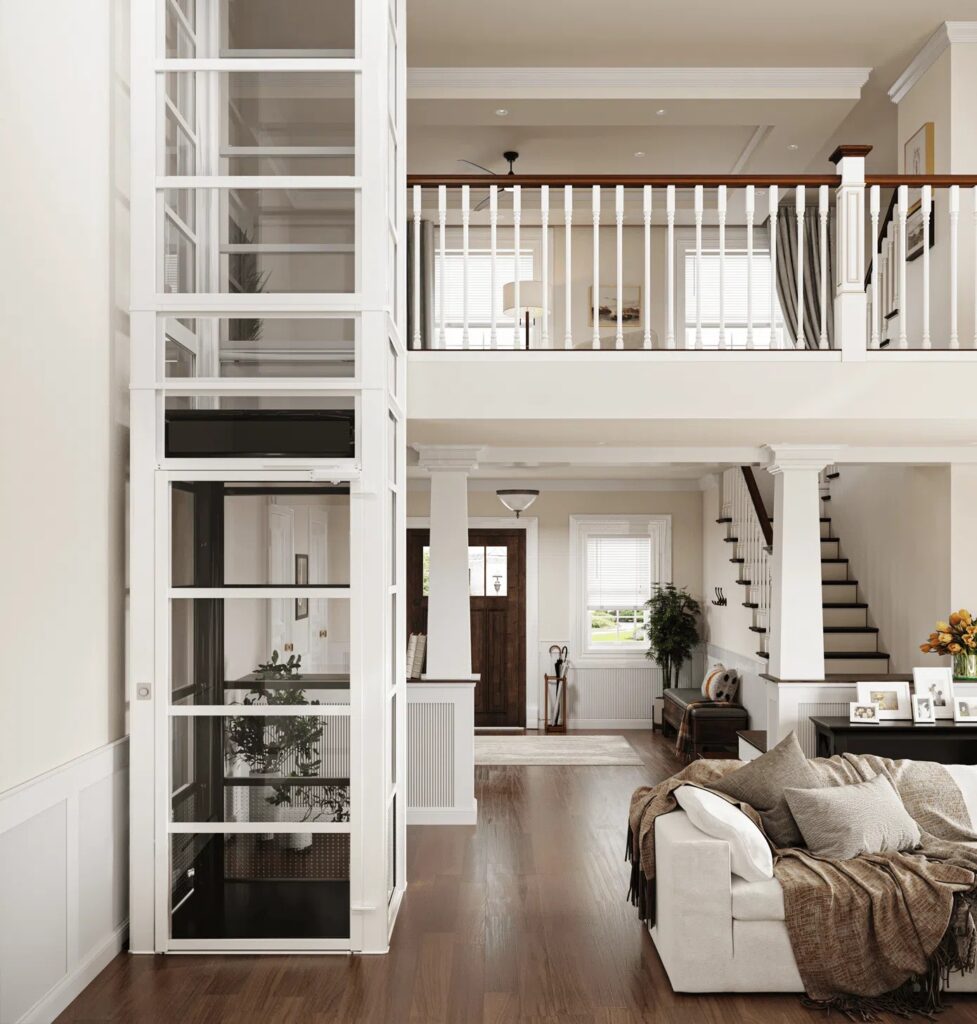
The Cube - Home Lift
Two Passenger Residential Elevator
Affordable Alternative To Stairs
Exterior Diameter
52 - 11/16 Inches
(1,316 millimeters)
Maximum Weight
450 Pounds
Rated: 2 People
Per Use
Control System
The control system is what operates the lift, directing it to the desired floor.
Most home lifts are equipped with simple user interfaces, such as buttons or touchscreens, making controlling easy and intuitive.
These systems ensure that passengers can enjoy a smooth and reliable ride with just the push of a button.
Safety Features
Safety is a top priority for any home elevator. Common safety features include emergency brakes, lights, and alarms to ensure protection in case of unexpected situations.
Elevators often include additional safety measures like door interlocks to prevent them from moving while the doors are open, providing passengers with peace of mind.
Doors
Elevator doors can be manual or automatic, depending on the design. They are a key part of the system, ensuring that passengers enter and exit safely.
Automatic doors typically come with safety mechanisms that prevent them from closing if something is in the way, while manual doors may require more hands-on use but are still built to be safe and reliable.
Power Supply
Home lifts require a power source to operate, typically using a 220-volt, single-phase power supply.
Many modern systems are designed to be energy-efficient, helping reduce power consumption.
Additionally, some include backup power options to ensure continued operation during power outages, enhancing reliability and safety in the home.

What Makes PVE Home Elevator Components Unique?
When talking about home elevators, PVE truly sets itself apart with its innovative component design. One of the standout features is its use of pneumatic technology, which powers the system using air pressure.
This air-powered system eliminates the need for cables or pulleys, making the lift incredibly smooth, quiet, and energy-efficient. It’s a cutting-edge solution that not only enhances the user experience but also reduces maintenance and environmental impact.
PVE’s elevator cabins are designed with aesthetics in mind, offering a sleek, modern look that can be customized to fit any home. With 360-degree panoramic views, the cabins provide a sense of openness, unlike traditional enclosed lifts.
For instance, the PVE30 model offers a space-efficient design that’s perfect for smaller homes, combining elegance with functionality.
You can also choose from various finishes and styles to match your home’s interior, blending functionality with style effortlessly.
From its efficient drive system to its stylish cabins, our components are designed to offer an exceptional combination of innovation, elegance, and convenience. These features make PVE elevators a top choice for homeowners who value both form and function.
Why Understanding Home Elevator Components Matters?
Knowing the home elevator components can greatly simplify the selection process. When you understand how each part works, you can better match a model to your specific needs.
Whether it’s ensuring the functionality, verifying its safety features, or choosing a design that complements your home, this knowledge helps you make an informed decision.
Understanding these elements also means you can confidently select an elevator that not only performs well but also fits seamlessly into your lifestyle.
By focusing on the details, you ensure that the elevator meets your expectations for both performance and style, making your investment worthwhile.
Want to learn more about home elevators? Our Introduction to Home Elevators has all the basics you need to get started. It’s a quick read that will help you make an informed choice!

Conclusion
Getting to know the home elevator components can make all the difference in choosing the right one for you. When you understand how each part functions, you can be sure that your new lift will be safe, functional, and stylish.
If you’re after a blend of cutting-edge technology and ease of use, PVE Home Elevators are worth considering. They offer advanced features and a sleek design that can truly enhance your home.
Check out How Does a Home Elevator Work? A Guide to Understanding Home Elevators how these elevators work to understand why they could be the perfect addition to your space.
Ready to see how these features can upgrade your home? Contact us today to explore our stylish and efficient lifts. Let’s find the perfect fit for your space!
FAQs
Q: What are the best materials and design options for an elevator cab?
Stainless steel is tough and low-maintenance, glass provides sleek, modern vibe, and wood addsa touch of warmth and class. Choose lighting that makes the space look great and safe, and customize the design to perfectly fit your home’s style.
Q: What safety features do home lifts have?
Home lifts come with various safety features, including emergency brakes, safety sensors, and alarms. Many have battery backups for power outages and emergency phones for added security. Regular inspections and maintenance also ensure safety and reliability.
Q: How often should you replace lift doors?
Lift doors should be replaced every 10-15 years, depending on usage and wear. Regular maintenance can extend their lifespan, but if there are signs of damage or frequent malfunctions, it would be a better time for a replacement.
Q: How do you fix stuck elevator doors?
To fix the stuck doors, ensure the power is on and the system is functioning properly. Check for obstructions or debris in the door tracks. If the problem persists, consult a technician to inspect the mechanism and perform necessary repairs.
Q: What is an emergency stop in a home elevator?
An emergency stop in a lift is a feature that lets you immediately halt the lift if there’s a problem or if someone needs to stop it quickly for safety reasons. You can activate it with a button or switch inside the cabin. This ensures that if something goes wrong, you can stop the lift safely and prevent further issues.
Q: Are Pneumatic Elevators reliable?
Yes, Pneumatic elevators are reliable. They use air pressure to move the cab, which reduces mechanical parts and maintenance needs. Their simple design and advanced technology ensure smooth, quiet operation and long-term dependability.



